Anireel is a competitively priced animated explainer-video creator/editor, and the latest innovative software package from Wondershare’s plethora of forward facing creative technologies.
Already noted for its video-editor Filmora, and host of other apps such as mind mapper EdrawMind, this latest edition is a logical step in terms of offering technology that empowers creatives. Wondershare is definitely vying for 1st place in the world of such tools, and ones that are accessible and affordable. Other notable tools include DemoCreator focused on demo video creation and Filmora focusing on entertainment videos.
Employing animators would traditionally cost $100s or $1000s. Having an app like Anireel not only puts the focus in your hands but also allows you to have full creative control so your message is your own, allowing you to fast-track animated explainer content with stunning results.
Whether you’re a Youtuber, or someone who works in content marketing, perhaps you create and edit video content for yourself, or for clients or employers, but perhaps the animated aspect has eluded you until now.
Anireel animated video maker is definitely worth a try. Explainer videos, as you’re most probably aware, and more so for animated versions, are a current and sure-fire way to generate friendly, accessible stories to show off your content and company history.
Chances are you’re already familiar with the process, and even if you’re not, Anireel simplifies the task of animating, and also gives you an up-to-date professional product you can gladly show off, again and again.
Let's take a look at some of Anireel’s top features , and see how you can bring your A-game in regards to getting your content out, and into the world.
Top five features (and reasons to use Anireel)
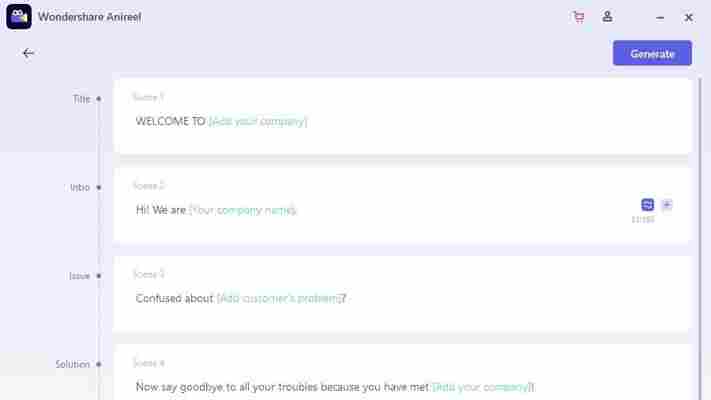
Script to animation
It’s as simple as it sounds. There is a ‘script to animation’ button in the UI, and the function is a time saver in regards to generating instant self-penned animation templates.
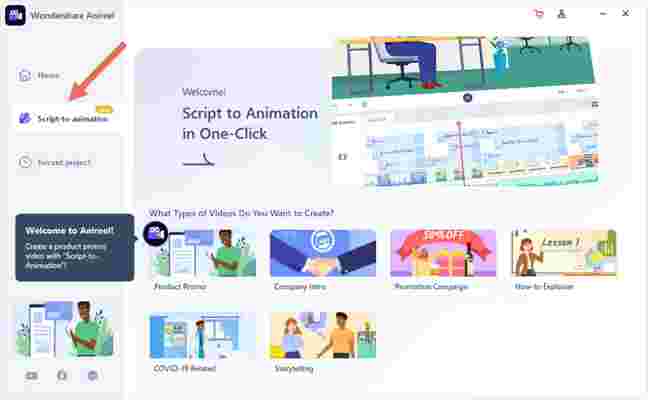
Input your script into a chosen script type, with the ability to add as many characters as you like, and simply click the generate button. Anireel will instantly match your content to an animated ‘first draft’, and convert your script into a voice over, ready for you to edit to perfection using a host of available and customizable assets.
Rich customizable assets and customizable anime characters(create brand characters)
Anireel comes with a host of built-in templates of all shapes and sizes. These include characters, actions, props, text and audio. It’s a drag-and-drop situation, as you’d hope, giving you full creative control of all moving aspects of your animation.
Anireel supports customizing the character style, facial features, clothing, and accessories at will, creating your unique IP image, and making your animation video more attractive.
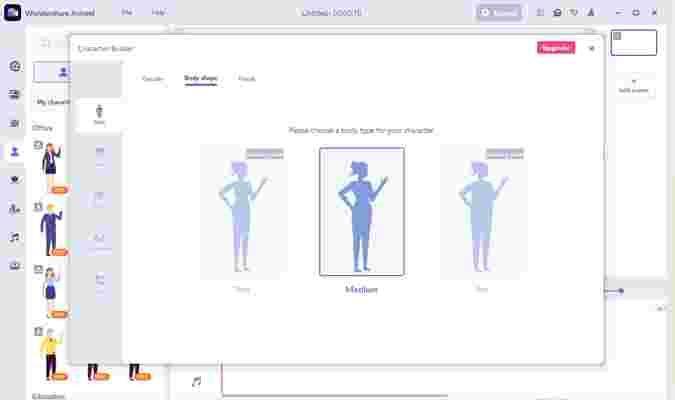
The ability to modify these assets in terms of size and color adds a richness to the process. But, you are not limited to the in-build assets, you can just as easily import your own pictures, videos, and audio clips, to be as creative as you like.
Worried about problems with file types? Anireel covers almost every conceivable type. Anyone already au-fait with video editing will find this super easy to use, as will newbies wanting to try their hands.
Text-to-speech and character lip sync
Through Anireel’s ‘deep learning technology’ you can turn your script into a wide variety of voices and tones.
Dubbing animations with voices can be a tricky and expensive venture but with Anireel the hard work has been done for you.
After entering your script and seeing it come alive in animated and vocalized form, your script, having been automatically converted to an ‘all singing and dancing’ animation, will be synchronized to your chosen character’s lip movements.
Remember, every element is fully customizable, so try out as many characters as you can until you find the right character voice combo.
Anireel animated video maker can be used in many different scenarios, and by anyone excited about getting their message across in a fun dynamic way. For social media lovers, influences, and more, the ability to share knowledge, show data, or make personal presentations, Anireel gives you the creative edge.
Likewise, if you’re an SMB owner, work in marketing, or are a freelancer. Anireel allows you to transform your sales and marketing strategy into something handsome and professional-looking with many ready-made templates .
Is corporate communications more your thing? Perhaps you're in mentoring and education. Whether you’re teaching, training, or tutoring, Anireel is going to give you the confidence in your own approach to communicating.
Anireel is sure to surprise even the most seasoned video creator and editor. Not only will it take the heft out of your creative processes, it will deliver stunning results that do your work and content justice.
Take a look at the Anireel homepage to see if it’s a fit for you .
OnePlus 10 Pro is now on sale - but should you pick up this new iPhone Pro rival?
The new OnePlus phone is finally available to buy, after getting announced a few weeks back, and you can check out our OnePlus 10 Pro review to read an in-depth dive as to whether it's up your alley or not.
This is the latest flagship phone from Chinese tech company OnePlus, and it starts at $899 / £799 (roughly AU$1,400) for 128GB of storage - that's a pretty decent price when you consider most other Pro phones are a little bit pricier.
We gave the phone four out of five stars in our review, which is a generally positive score - here's why.
In defense of the OnePlus 10 Pro...
This is a great phone for people who like to stream movies or TV, or play games. Its screen is big and beautiful, with a high max brightness and great contrast. You'll find the colors look vibrant and the display refreshes quickly, giving you a good viewing experience.
Plus, if you're a gamer, the Snapdragon 8 Gen 1 chipset here is very powerful. You're not going to be caught in a firefight with a laggy or buggy mobile. Sure, it can overheat a little bit, but less so than some other phones with the chip.
Another fantastic feature is the 80W fast charging, which could power the phone from empty to full in just half an hour. It's so fast that you can literally see the percentage of charge go up in real time. We should point out, though, that in the US the powering speed is only 65W.
We'll also point out the price: this phone costs less than the Samsung Galaxy S22 Plus , iPhone 13 Pro , Oppo Find X5 Pro and Xiaomi 12 Pro , despite having similar features. This is a cheaper flagship that you might be able to afford.
One other thing we do need to flag, is that OnePlus has confirmed there won't be a 'standard' 10 - so there's no point waiting for an affordable take on the Pro.
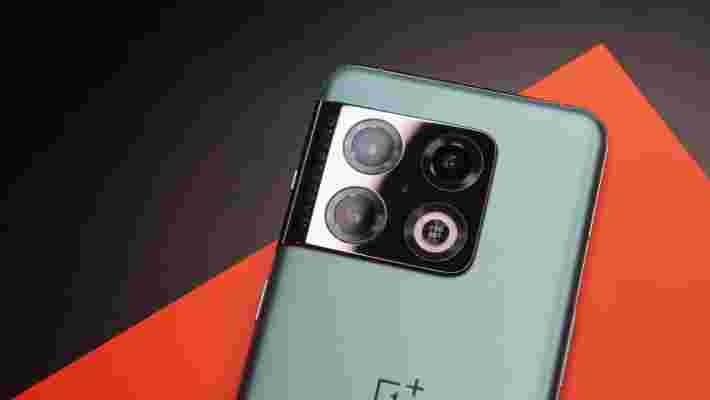
...but why it might not be for you
The OnePlus 10 Pro's cameras were great. They were also bad. What do we mean by this? Well, they were inconsistent - sometimes we'd take fantastic pictures, but other times the snaps were noticeably not as good as they would be on rival phones.
So some people might never notice an issue with the OnePlus 10 Pro, but others definitely will - if you're considering this phone purely for the camera experience, you might want to consider the alternatives.
Plus, the phone is pretty huge. If you've got small hands, don't want to require all 10 digits to control the thing, or think you might have to invest in a second belt if you put this in your pocket, you should consider a more compact rival.
Oh, and you're getting a slightly weird experience in the US. Not only is the charging speed slightly slower, as we've already said, but you don't have the option of buying the 256GB version of the phone. Some people really like having lots of storage, so it's a weird situation.
Dying Light 2 PC performance: a new benchmark in ray tracing
PC games like Metro Exodus and now Dying Light 2 are key to showing what the future of PC gaming will look like, particularly in the world of graphics. Back in 2018, Metro Exodus used its focus on horror and atmospheric level design to really show how ray tracing could enhance presentation and impact how a game is played. Dying Light 2 does the same thing -- only this time, it does it even better.
Back when Dying Light 2’s system requirements were first announced, I was honestly shocked at the high system requirements, particularly for graphics presets with ray tracing enabled. Now that I have my hands on the title and I can do a bit of benchmarking – my favorite thing in the world – I finally understand why the bar was so high.
It’s stunning.
This game will raise the bar for ray tracing for a while, and will definitely be a game I personally use to test future hardware for a long time to come – even if it annoyingly doesn’t feature a canned benchmark. It’s the game to test ray tracing in 2022, and you should definitely at least try it if you have the hardware for it.
Unfortunately, that’s a pretty big if, as the game with ray tracing enabled is extremely heavy. I benchmarked it across 6 different graphics cards to see exactly what you need to play with the fancy lighting effects, and ... well, you’re going to need a pretty fancy GPU.
Truly next-generation
Dying Light 2's performance, especially at 4K, is really funny to me. That resolution was supposed to be democratized with the release of the RTX 3070 – something I called out in my review of that graphics card. But even with DLSS enabled, there's hardly a graphics card out there that can hit 60 fps at that resolution with ray tracing enabled.
With all the ray tracing effects enabled and DLSS set at the Quality preset, the RTX 3090 usually hovers around 40 fps at 4K. That’s definitely playable, but it’s not ideal, especially in a game that’s so focused on quick movement. You don’t want a zombie – sorry, biter – to take a chunk out of you just because your framerate dipped. Changing the DLSS preset to Balanced mostly fixes this, and we see performance at this level go up to 55 fps. So, that’s the preset we did all of our testing with.
If you’re not one of the privileged few able to afford an RTX 3090 or RTX 3080 Ti , you’re going to need to move to the Performance DLSS option, which saw fps go from 48 fps to 58 fps on the RTX 3080. That’s essentially 60 fps, and felt incredibly smooth. But if you don’t have an RTX 3080 or better, you should basically forget about playing Dying Light 2 at 4K with ray tracing enabled.
If you do have a less powerful card and want to play at 4K, our advice is to just disable the RT effects and keep DLSS and FSR enabled. Performance doubles without ray tracing on Nvidia cards, and will go up by 4x on AMD Radeon cards.
AMD needs better ray tracing
AMD’s RDNA 2 architecture finally added ray accelerators, meaning Radeon RX 6000 series graphics cards such as the RX 6800 XT can use ray tracing effects without being a literal slide show. But AMD is far behind Nvidia when it comes to ray tracing, even with its generally fantastic FSR software enabled. Yes, Dying Light 2 features both DLSS and FSR; it’s like the developers knew how hard the game would be to run.
But the gulf in performance is obvious when you look at the numbers. The AMD Radeon RX 6800 XT, a GPU pitched as a 4K graphics card when it launched, gets just a 25 fps average with ray tracing enabled and FSR on its Balanced preset. That’s compared to the RTX 3080’s 48 fps with ray tracing enabled and DLSS on Balanced. DLSS is more powerful than FSR generally, but if you’re using the best option you have available to you, Nvidia just has the stronger hand in this game.
With the RX 6800 XT, you’re not really going to see great performance with ray tracing enabled unless you’re running at 1080p, again with FSR set to Balanced. At that resolution, you’re getting 64 fps. But if you’re cutting down to 1080p on a 4K monitor, and you’re adding FSR on top of that, it’s pretty hard to look at.
Luckily, just turning off ray tracing on the AMD cards completely solves the issue. The games presentation changes quite a bit – especially in indoor areas, due to the lack of ray traced global illumination – but your performance will jump up fourfold.
At 4K with FSR set to balanced and ray tracing disabled, the RX 6800 XT jumped from a 25 fps average up to 101 fps. Literally quadrupling the frame rate.
It’s a similar story with the RX 6700 XT at 1440p, that graphics card’s target resolution. With ray tracing enabled and FSR set to Balanced, the 6700 XT gets just 32 fps at 1440p. Turn the ray tracing effects off and that number jumps up to 113 fps.
In Dying Light 2, at least, ray tracing is simply not worth enabling on an AMD graphics card. And, if you turn it off, you’re going to get extremely good performance across the board. Don’t get me wrong, the game doesn’t look bad with ray tracing enabled, it’s just a bit different. And, honestly the game will probably be easier without the lighting effects, so that’s something to take into consideration.
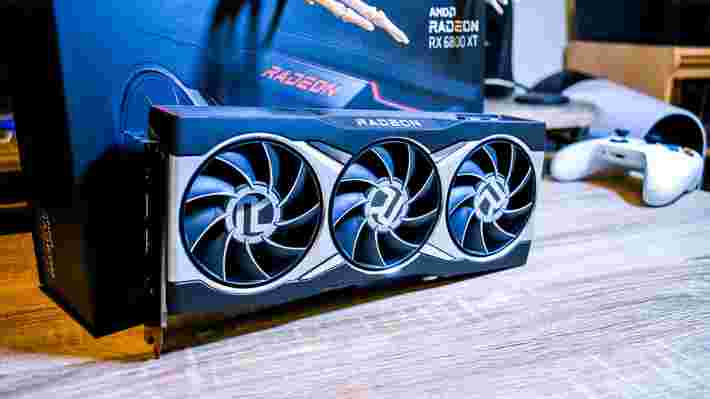
Is Dying Light 2 ray tracing worth it?
I'll probably always enable ray tracing for games that support it, because I like shiny things. But for most people, I usually recommend turning it on, looking at how fancy it looks, and then turning ray tracing off so you get a playable frame rate.
Dying Light 2 is a bit more complicated.
In a horror game like this, with a lot of dark spaces where you want to feel like there could be monsters lurking, a more realistic lighting engine just makes sense. Thanks to the ray traced global illumination, areas of the game that would be dark in real life, due to where they are in relation to a light source like a window or a light bulb, are actually dark . As in, you won’t be able to see anything there. That makes the game a bit harder to actually play, but if that’s what you want out of the game, then it’s a setting that’s definitely worth enabling. More than the RT Ambient Occlusion, shadows or reflections – ray traced global illumination changes how you play Dying Light 2.
Darker areas will be more dangerous and you’re going to be more reliant on your flashlight – which you can also make ray traced in the settings menu.
What complicates this further, though, is how much movement matters in the game. Just as in the first game, Dying Light 2 has a strong focus on fast movement and parkour, which makes sub-60 fps gameplay more uncomfortable than it would be in slower-paced games. Hitting the 60 fps sweet spot is definitely more important here than it was in Metro Exodus – a game that uses global illumination for the same kind of effect.
A better PC port than I was expecting
I’ll be honest, when I first saw Techland release system requirements for Dying Light 2, I was bracing myself for a rough port. However, I’ve been pleasantly surprised.
Yeah, it’s a heavy game, and becomes even heavier with ray tracing enabled. But, the game runs smoothly and doesn’t feature jittery frame times or GPU utilization drops that marr more lackluster PC ports.
And with ray tracing disabled, the performance is strong across the board, and is further enhanced by Techland including both DLSS and FSR. That means you get upscaling tech that works, no matter what hardware you’re running in your PC.
There are some things I would change, like making the menu have a 21:9 aspect ratio when connected to an Ultrawide monitor or letting you control the whole settings and inventory pages with your keyboard. But for a PC port in 2022, everything just kind of works.
Plus, you can bet that the PS5 and Xbox Series X versions of this game don’t look nearly as good . I can say definitively that if you’re going to be playing Dying Light 2, and you have access to some decent PC hardware – the PC is going to be the ultimate platform for this game.